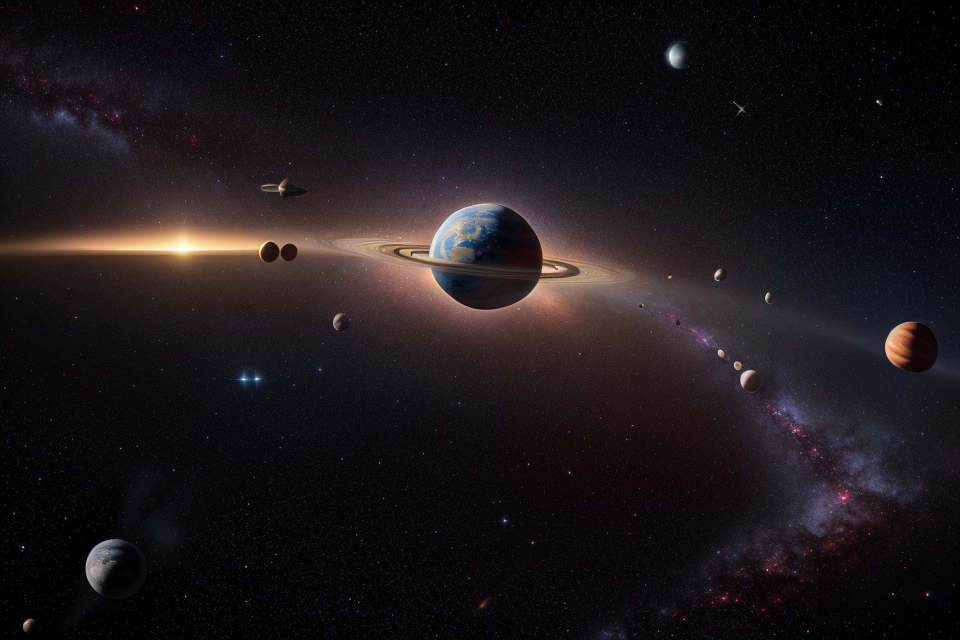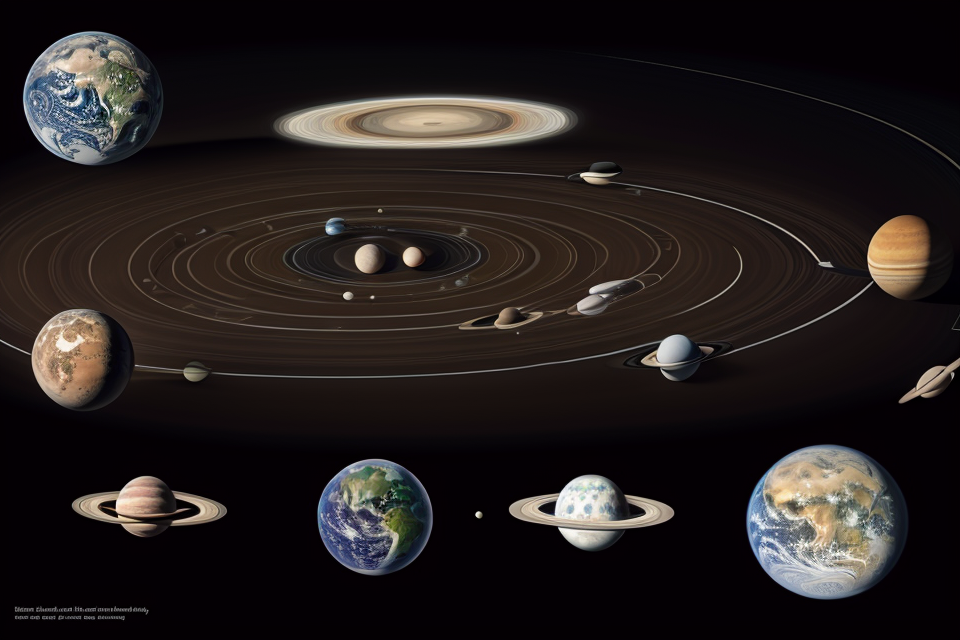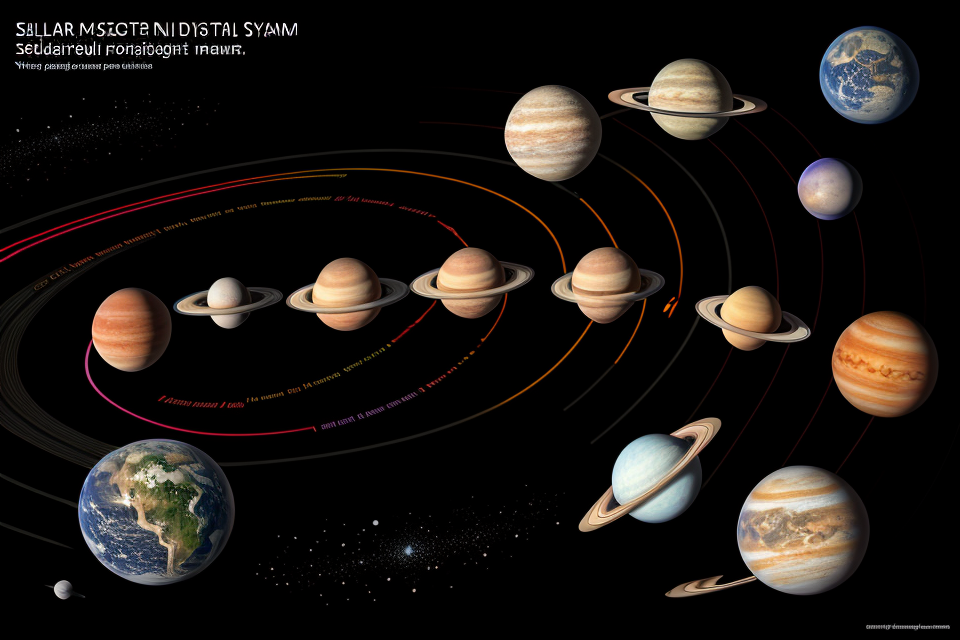Get ready to explore the mysterious universe as we take you on a journey through the current planetary positions in our solar system. As an Astronomy 101 beginner, you might be curious about the whereabouts of the planets and how they influence our lives. So, buckle up and join us as we embark on this fascinating adventure to uncover the secrets of the cosmos. Let’s dive into the exciting world of astronomy and discover the current planetary positions together!
What are the Planets in Our Solar System?
Overview of the Solar System
Our solar system consists of a vast array of celestial bodies, including eight planets, dwarf planets, and other smaller objects such as asteroids, comets, and Kuiper Belt objects. Let’s take a closer look at each of these categories:
Eight Planets
The eight planets in our solar system are Mercury, Venus, Earth, Mars, Jupiter, Saturn, Uranus, and Neptune. These planets are categorized based on their size, composition, and other characteristics. For example, Mercury is the smallest planet in our solar system, while Jupiter is the largest. Earth is the only known planet to support life.
Dwarf Planets
Ceres, Pluto, and Eris are the three recognized dwarf planets in our solar system. Dwarf planets are celestial bodies that orbit the sun but do not meet the criteria to be classified as full-fledged planets. They are typically smaller than planets and are not spherical in shape.
Other Celestial Bodies
There are many other celestial bodies in our solar system, including asteroids, comets, and Kuiper Belt objects. Asteroids are small, rocky objects that orbit the sun. Comets are icy bodies that also orbit the sun. Kuiper Belt objects are similar to comets but are found in a region beyond Neptune. These objects are important for understanding the early formation of our solar system.
Current Positions of the Planets
- Mercury: Closest to the sun, moves fastest
- At present, Mercury is in the constellation of Taurus, having just passed the border into this region from Aries. It will remain in Taurus for several weeks before moving on to Gemini. Mercury’s speed across the sky means that it appears to move more quickly than any other planet, and its position relative to the stars will change noticeably over the course of a single evening.
- Venus: Second closest to the sun, often called the “evening star” or “morning star”
- Venus is currently in the constellation of Aquarius, and it is visible as a bright, white point of light in the western sky after sunset. As the closest planet to the Earth, Venus appears to move relatively slowly across the sky, and it spends long periods in each constellation. It is known as the “evening star” when it appears in the western sky after sunset, and as the “morning star” when it appears in the eastern sky before sunrise.
- Earth: Third closest to the sun, home to life and the center of the solar system for us
- Of course, the Earth is always at the center of the solar system as far as we are concerned, but from an astronomical perspective, it is the third planet from the sun. The Earth is currently in the constellation of Cetus, and it appears as a small, blue-green planet in photographs taken from space. From our perspective, the Earth appears to move relatively slowly across the sky, but from a cosmic perspective, it is hurtling through space at over 67,000 miles per hour.
- Mars: Fourth closest to the sun, red and rocky, and the focus of much space exploration
- Mars is currently in the constellation of Capricornus, and it appears as a red, Martian disk in the sky. Mars is the fourth planet from the sun, and it is known for its red appearance and rocky surface. It is also the focus of much space exploration, with several spacecraft having landed on its surface in recent years.
- Jupiter: Largest planet, famous for its storms and moons
- Jupiter is currently in the constellation of Capricornus, and it appears as a bright, white disk in the sky. Jupiter is the largest planet in the solar system, and it is famous for its Great Red Spot, a massive storm that has been raging on the planet for centuries. Jupiter also has a large number of moons, including the four Galilean moons, which were discovered by Galileo in the 17th century.
- Saturn: Second largest planet, known for its rings and moons
- Saturn is currently in the constellation of Sagittarius, and it appears as a bright, yellow disk in the sky. Saturn is the second largest planet in the solar system, and it is famous for its rings, which are made up of ice and rock particles. Saturn also has a large number of moons, including Titan, which is the second largest moon in the solar system and is known for its dense, orange atmosphere.
- Uranus: Third largest planet, tilted on its axis and less studied than other planets
- Uranus is currently in the constellation of Pisces, and it appears as a small, blue-green disk in the sky. Uranus is the third largest planet in the solar system, and it is known for its unusual tilt on its axis, which causes it to appear upside down when viewed from Earth. Uranus is also less studied than other planets, and there is still much that we do not know about this enigmatic world.
- Neptune: Fourth largest planet, named after the Roman god of the sea and less studied than other planets
- Neptune is currently in the constellation of Aquarius, and it appears as a small, blue-green disk in the sky. Neptune is the fourth largest planet in the solar system, and it is named after the Roman god of the sea. Like Uranus, Neptune is less studied than other planets, and there is still much that we do not know about this distant world.
The Importance of Understanding Planetary Positions
Navigation and Exploration
Planetary positions play a crucial role in navigation and space exploration. The knowledge of planetary positions allows us to understand the dynamics of our solar system and to predict the movement of celestial bodies. This information is critical for spacecraft navigation, as it helps to determine the best trajectory for a spacecraft to reach its destination.
Furthermore, understanding the planetary positions helps us to avoid potential collisions with other celestial bodies. For instance, NASA’s Jet Propulsion Laboratory uses the positions of Mars and Earth to plan the trajectory of spacecrafts that are sent to explore the planet. The precision of these calculations is crucial, as even a small error in the trajectory can result in a failed mission.
Moreover, the knowledge of planetary positions is also important for astronomers who study the movement of celestial bodies. By understanding the positions of planets, they can make predictions about the movement of celestial bodies and the timing of celestial events. This information is critical for the study of the solar system and the universe as a whole.
Overall, the understanding of planetary positions is essential for navigation and space exploration, as well as for the study of the dynamics of our solar system. With the help of advanced technology and software, astronomers and space scientists can use this information to make accurate predictions and to plan missions to explore the vast expanse of space.
Scientific Study
Insights into Solar System Formation and Evolution
Studying the planetary positions allows us to gain a deeper understanding of the formation and evolution of our solar system. By analyzing the positions of the planets and their moons, scientists can reconstruct the past events that shaped our solar system. This knowledge can help us predict future events and better understand the processes that govern the dynamics of our solar system.
Understanding the Universe as a Whole
By studying the positions of planets, scientists can gain insights into the structure and evolution of the universe as a whole. By comparing the positions of our solar system with other star systems, scientists can learn more about the origins and evolution of our galaxy and the universe. This knowledge can help us better understand the processes that govern the universe and the role that our solar system plays in the grand scheme of things.
FAQs
1. What are the planets currently in the solar system?
As an AI language model, I do not have real-time information. However, as of my knowledge cutoff in September 2021, the planets in our solar system are Mercury, Venus, Earth, Mars, Jupiter, Saturn, Uranus, and Neptune. Pluto was reclassified as a dwarf planet in 2006.
2. How can I find out the current positions of the planets?
You can find the current positions of the planets online through various astronomy websites, apps, or planetarium software. Some popular websites include NASA’s Jet Propulsion Laboratory, In-The-Sky.org, and Stellarium. You can also use astronomy apps like Sky-Skan or Sky-Skan Mobile to access up-to-date information on the planets’ positions.
3. How do the positions of the planets change over time?
The positions of the planets change over time due to their orbital motion around the Sun. Each planet follows an elliptical orbit, and the time it takes to complete one orbit is called a planet’s year. The distance between the Earth and the Sun, called an astronomical unit (AU), is used as a standard unit of measurement for the solar system. As the planets move in their orbits, their positions relative to each other and the Sun change, leading to different astronomical events and phenomena.
4. What is the significance of knowing the current planetary positions?
Knowing the current planetary positions is important for various purposes, including navigation, astronomy research, and understanding the movement of celestial bodies. Astronomers use the positions of the planets to study the dynamics of the solar system, predict astronomical events, and explore the universe. In navigation, the positions of the planets are used to determine the time and location of celestial events, which are crucial for determining a location on Earth.



